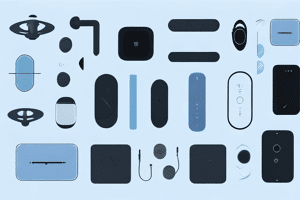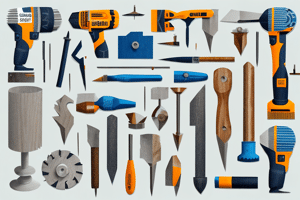UPDATED: August 08, 2023
Do you use a treadmill to exercise at home? If so, it’s essential to understand the importance of maintaining your treadmill for optimal performance. Not only will proper maintenance extend the lifespan of your treadmill, but it will also ensure your investment stays protected. In this article, we’ll discuss how to clean, lubricate, inspect, and care for your treadmill’s motor and electronics. Let’s get started.
Understanding the Importance of Treadmill Maintenance
Just like any piece of equipment, treadmills need regular maintenance to function properly. Routine maintenance can help prevent costly repairs and ensure your treadmill lasts as long as possible. It’s also important to follow the manufacturer’s maintenance guidelines to avoid voiding the warranty.
Regular maintenance of a treadmill is crucial to keep it in good working condition. It not only saves you money in the long run but also ensures that your workouts are safe and comfortable. Treadmills are an excellent investment for your health, and taking care of them is essential to protect that investment.
Protecting Your Investment
A treadmill is an investment, both in terms of money and your health. Taking care of your investment will ensure it continues to function properly and can be used for years to come. One of the easiest ways to protect your treadmill is to place it away from direct sunlight and keep it in a cool, dry place.
Another way to protect your investment is to invest in a treadmill mat. A treadmill mat can protect your floors from scratches and dents caused by heavy equipment. It also helps to reduce noise and vibration during your workouts.
Ensuring Optimal Performance
A well-maintained treadmill will provide you with smooth and comfortable workouts. Proper maintenance ensures that the belt, rollers, and motor function efficiently and reduces the likelihood of breakdowns or malfunctions. This not only keeps your treadmill working as it should but also improves your workout experience.
Regularly cleaning your treadmill is an important part of maintenance. Dust and dirt can accumulate on the belt and rollers, causing friction and reducing the lifespan of your equipment. Use a soft cloth and a mild cleaning solution to wipe down your treadmill after each use.

Extending the Lifespan of Your Treadmill
With proper maintenance, a treadmill can last for years. Neglecting maintenance, however, can lead to premature wear and tear and costly repairs or replacements. Something as simple as cleaning and lubricating your treadmill regularly can make a significant difference in how long it lasts.
Regularly lubricating your treadmill is essential to keep it running smoothly. The belt and rollers need to be lubricated to reduce friction and prevent damage. Follow the manufacturer’s guidelines on how often to lubricate your treadmill and which lubricant to use.
Another way to extend the lifespan of your treadmill is to use it properly. Avoid wearing shoes with abrasive soles and do not overload the machine with heavy weights. Always follow the weight and speed limits recommended by the manufacturer.
In conclusion, maintaining your treadmill is essential to protect your investment, ensure optimal performance, and extend its lifespan. By following the manufacturer’s guidelines and performing routine maintenance, you can enjoy safe and comfortable workouts for years to come.
Cleaning and Lubricating Your Treadmill
Regular cleaning and lubrication are two of the most important things you can do to maintain your treadmill. Not only will it keep your treadmill looking and feeling new, but it will also prevent damage and improve performance. Here are some additional tips to ensure your treadmill stays in top condition:
Wiping Down the Exterior
Start by wiping down the exterior of your treadmill with a damp cloth. This will remove any dust or debris that may have accumulated over time. Be sure to avoid getting water or a cleaning solution on the console or motor. If you have a folding treadmill, be sure to wipe down the hinges and any other moving parts to prevent them from becoming stiff or rusted.
It's also a good idea to periodically inspect the power cord and plug for any signs of wear or damage. If you notice any frayed wires or cracks in the plug, discontinue use immediately and contact a professional for repairs.
Cleaning the Treadmill Belt
Next, clean the treadmill belt with a dry cloth to remove any debris or sweat that has accumulated. For more thorough cleaning, use a mild soap or cleaner and a soft-bristled brush. Be sure to follow the manufacturer’s instructions for any cleaning products you plan to use.
It's important to note that using harsh chemicals or abrasive brushes can damage the belt and shorten its lifespan. If you're unsure about which cleaning products to use, consult your treadmill's user manual or contact the manufacturer for recommendations.

Lubricating the Belt and Rollers
One of the most critical aspects of treadmill maintenance is keeping the belt and rollers lubricated. Lubrication reduces friction, which can prevent damage to the treadmill’s motor and belt. Follow the manufacturer’s instructions for the type and frequency of lubrication. Typically, it’s recommended to lubricate the belt every three months or after every 40 hours of use.
When applying lubricant, be sure to use only the recommended amount. Too much lubricant can cause the belt to slip, while too little can cause excess wear and tear. Also, be sure to wipe off any excess lubricant to prevent it from attracting dirt and debris.
Checking for Loose Parts
Before each use, it's a good idea to check for any loose or damaged parts on your treadmill. This includes the handrails, console, and any other components. Tighten any loose screws or bolts and replace any damaged parts before using your treadmill.
Regular maintenance and cleaning can help extend the life of your treadmill and ensure it continues to function properly for years to come. By following these tips and the manufacturer's recommendations, you can keep your treadmill in top condition and enjoy a safe and effective workout every time.
Inspecting and Adjusting the Treadmill Belt
Over time, the treadmill belt can become loose or worn out. Checking and adjusting the belt is crucial for preventing damage to other parts of the treadmill. Here’s how to inspect and adjust the belt:

Checking for Wear and Tear
Start by inspecting the treadmill belt for signs of wear and tear. Look for fraying, cracking, or stretching. These signs indicate that the belt is nearing the end of its lifespan and needs to be replaced. If you notice any damage, it’s time to replace the belt.
It’s important to keep in mind that the lifespan of a treadmill belt depends on several factors, including usage, maintenance, and the quality of the belt itself. If you use your treadmill regularly, it’s a good idea to inspect the belt every few months to ensure that it’s still in good condition.
Aligning and Tightening the Belt
Next, use the treadmill’s adjustment bolts to align and tighten the belt. Be sure to follow the manufacturer’s instructions for proper alignment. A poorly aligned belt can cause damage to the treadmill’s motor or other parts.
When tightening the belt, be careful not to over-tighten it. An overly tight belt can cause excessive friction, which can lead to premature wear and tear. On the other hand, a belt that is too loose can slip, which can also cause damage to the treadmill.
Replacing a Damaged Belt
If your treadmill belt is damaged beyond repair, it’s time to replace it. Consult the manufacturer’s instructions for the correct size and type of belt to use. Replacing the belt can be a bit tricky, so it’s often best to have a professional do it for you.
When replacing the belt, it’s also a good idea to inspect the other parts of the treadmill for wear and tear. This includes the rollers, the deck, and the motor. If any of these parts are damaged, it’s important to replace them as well to ensure that your treadmill runs smoothly and safely.
Remember, proper maintenance is key to extending the lifespan of your treadmill and preventing costly repairs. By inspecting and adjusting the belt regularly, you can keep your treadmill running smoothly for years to come.

Caring for the Treadmill Motor and Electronics
The motor and electronics are the heart of your treadmill, and caring for them is essential for optimal performance. Here’s how to keep the motor and electronics in good condition:
Keeping the Motor Clean and Dust-Free
The motor is one of the most critical parts of your treadmill. Keeping it clean and dust-free is essential for preventing damage and ensuring optimal performance. Use a dry cloth or vacuum attachment to remove any dust or debris that has accumulated on or around the motor.
It is also important to lubricate the motor regularly. This will help reduce friction and wear on the motor, which can lead to overheating and damage. Consult the manufacturer’s instructions for the recommended lubricant and frequency of application.
Inspecting and Replacing Motor Brushes
The motor brushes are responsible for transferring electricity to the motor. Over time, they can wear down and need to be replaced. Consult the manufacturer’s instructions for checking and replacing the motor brushes. This is typically a job best left to a professional.
In addition to replacing the motor brushes, it is important to check the wiring and connections to ensure they are secure and free from damage. Loose or damaged wiring can cause the motor to malfunction or stop working altogether.
Protecting the Electronics from Power Surges
Power surges can damage the electronics in your treadmill. Always plug your treadmill into a surge protector to prevent damage from electrical fluctuations. It is also a good idea to unplug your treadmill during thunderstorms or other severe weather conditions to prevent damage from lightning strikes.
Regularly inspect the power cord and plug for any signs of damage, such as fraying or cracking. If you notice any damage, stop using your treadmill immediately and have it repaired by a professional.
Caring for your treadmill’s motor and electronics is essential for ensuring optimal performance and longevity. By following the tips above, you can keep your treadmill running smoothly and avoid costly repairs or replacements.
Maintaining your treadmill doesn’t have to be a daunting task. With regular cleaning, lubrication, and inspections, you can keep your treadmill in top shape for years to come. Follow the manufacturer’s maintenance guidelines, and don’t hesitate to consult a professional if needed. Remember, taking care of your treadmill is an investment in your health and well-being. Happy exercising!
Checkout Some Girl Fitness...
Can't wait to level up your fitness game? Discover the game-changing "Best Fitness Mirror 2023" on the Best Stuff for Girls - your ultimate guide to a cutting-edge workout experience!





